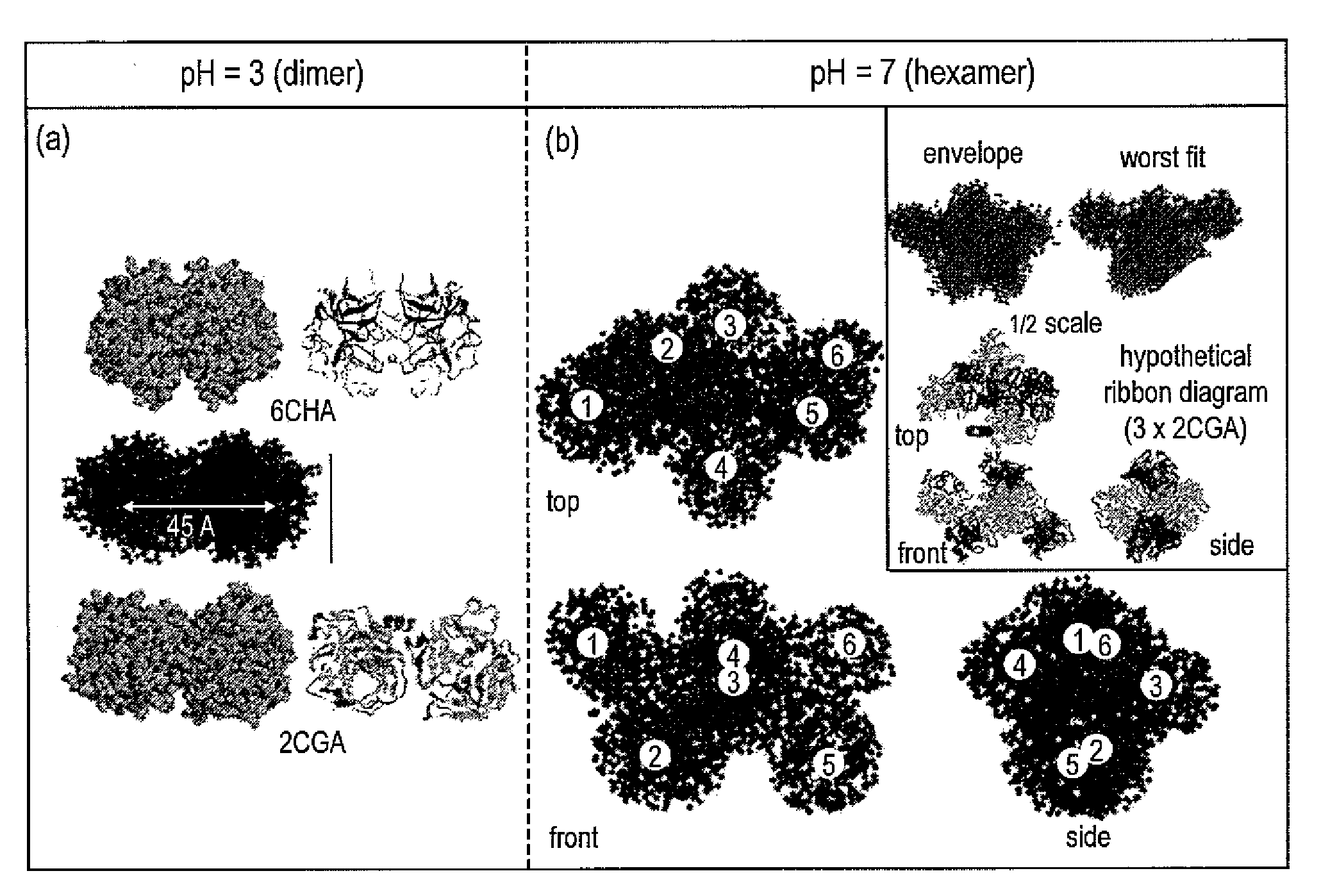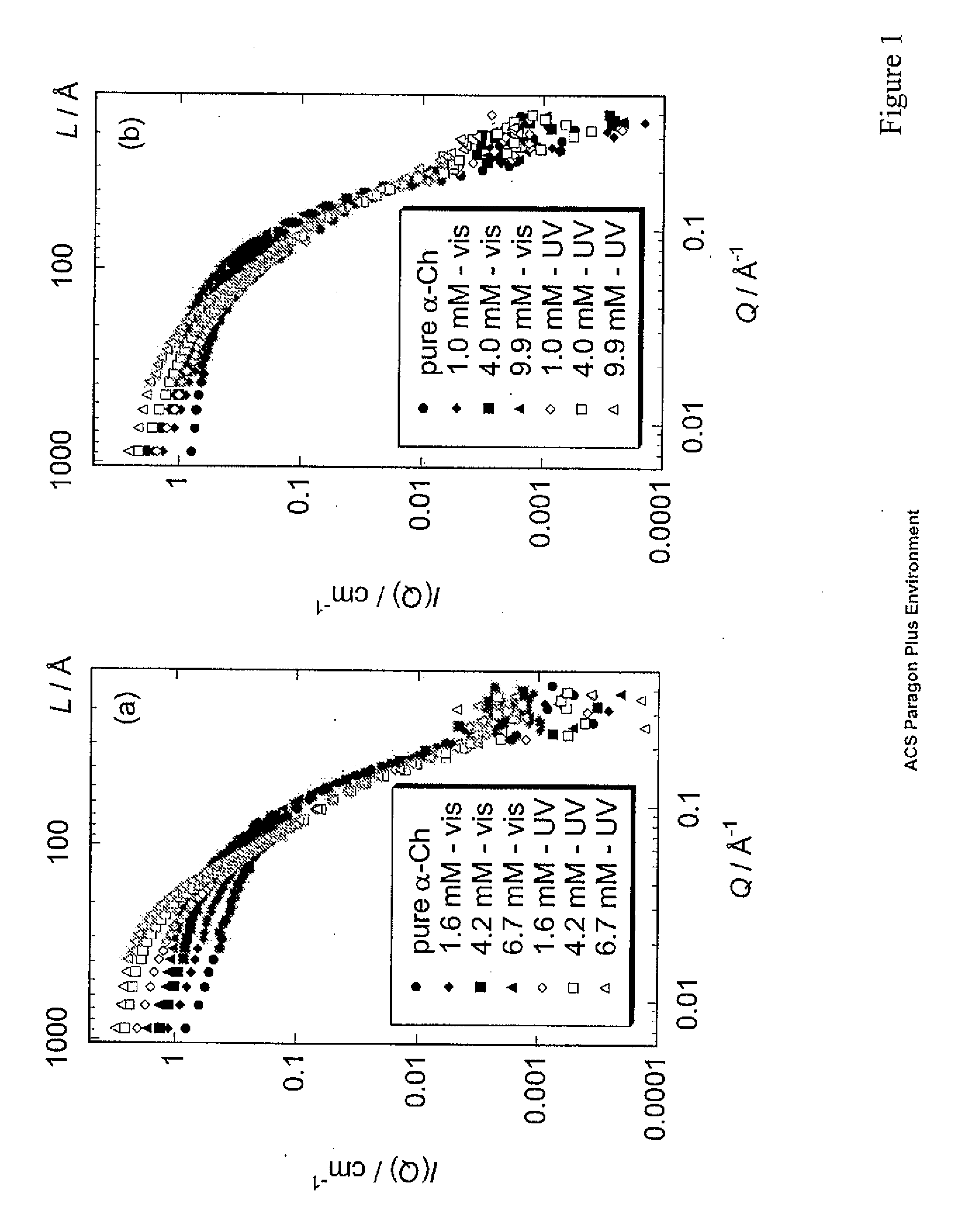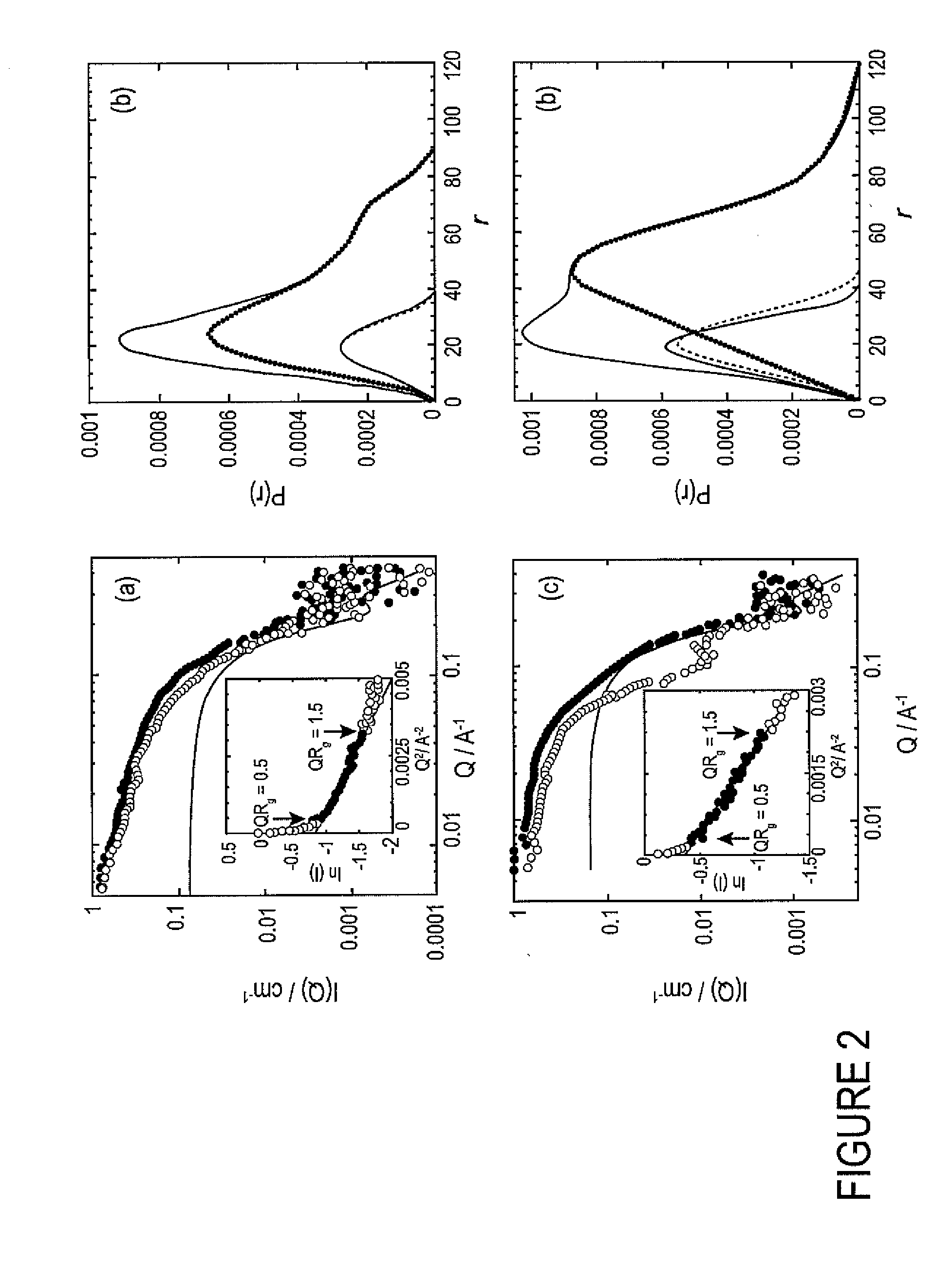Using photo-responsive surfactants to reversibly control protein aggregation with light illumination
a surfactant and photoresponsive technology, applied in the field of photoresponsive surfactants to reversibly control protein aggregation with light illumination, can solve the problems of unwanted or deleterious effects, the precise nature of the conformation of protofibrils in the solution remains unknown, and the solution structure of these important intermediate species remains unknown
- Summary
- Abstract
- Description
- Claims
- Application Information
AI Technical Summary
Benefits of technology
Problems solved by technology
Method used
Image
Examples
Embodiment Construction
[0016]Shape-reconstruction analysis applied to small angle neutron scattering (SANS) data was used to determine the in vitro conformations of α-chymotrypsin oligomers that form as a result of partial unfolding with a photoresponsive surfactant. In the presence of the photo-active surfactant under visible light, the native oligomers (dimers or compact hexamers) rearrange into expanded corkscrew-like hexamers. Converting the surfactant to the photo-passive form with UV-light illumination causes the hexamers to laterally aggregate and intertwine into dodecamers with elongated, twisted conformations containing cross-sectional dimensions similar to amyloid protofilaments. Secondary-structure measurements with FT-IR indicate that this photo-induced hexamer-to-dodecamer association occurs through intermolecular β sheets stabilized with hydrogen bonds, similar to amyloid formation. SANS is ideally suited to the study of these associated intermediates, providing direct observation of the mec...
PUM
| Property | Measurement | Unit |
|---|---|---|
| Density | aaaaa | aaaaa |
| Density | aaaaa | aaaaa |
| Density | aaaaa | aaaaa |
Abstract
Description
Claims
Application Information
 Login to View More
Login to View More - R&D
- Intellectual Property
- Life Sciences
- Materials
- Tech Scout
- Unparalleled Data Quality
- Higher Quality Content
- 60% Fewer Hallucinations
Browse by: Latest US Patents, China's latest patents, Technical Efficacy Thesaurus, Application Domain, Technology Topic, Popular Technical Reports.
© 2025 PatSnap. All rights reserved.Legal|Privacy policy|Modern Slavery Act Transparency Statement|Sitemap|About US| Contact US: help@patsnap.com



